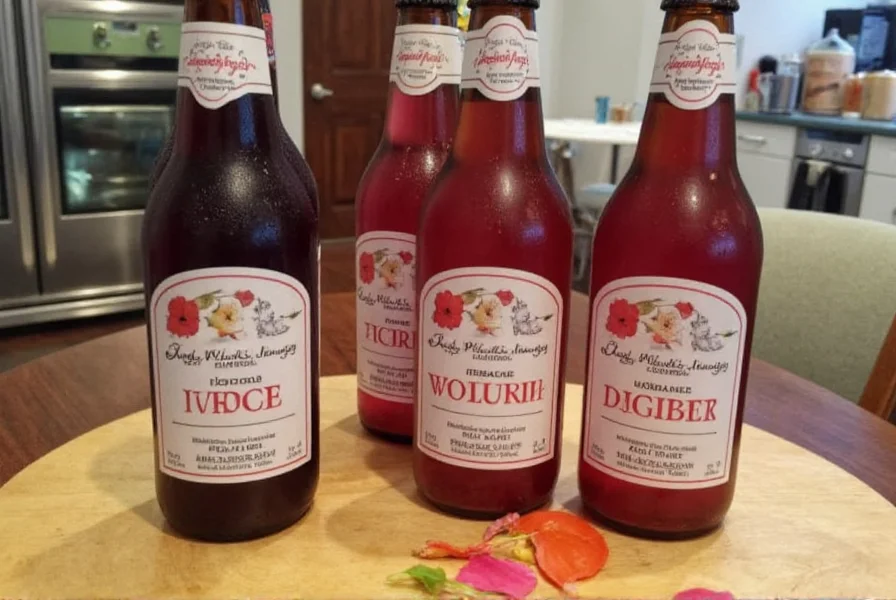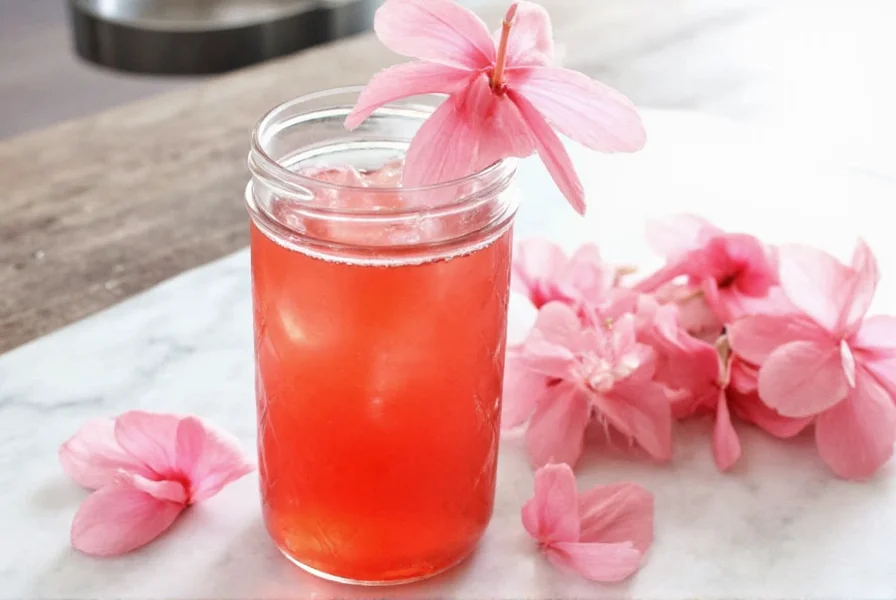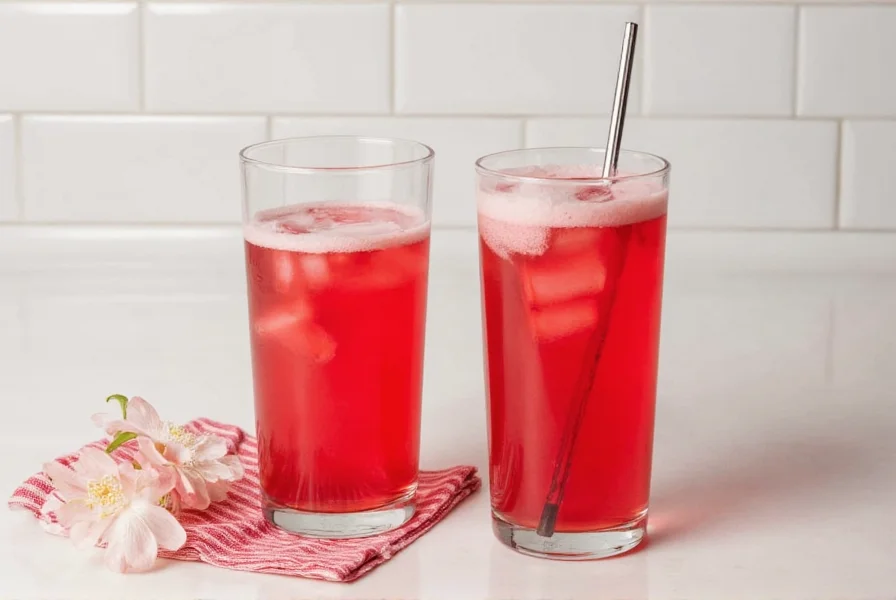Hibiscus ginger beer delivers a complex flavor profile that combines the natural tartness of hibiscus with the warming spice of ginger. Unlike commercial ginger beers that often contain higher alcohol content, authentic hibiscus ginger beer typically contains less than 0.5% alcohol due to natural fermentation, making it essentially non-alcoholic. The beverage's deep crimson color comes from anthocyanins in the hibiscus calyces, which also contribute to its potential health properties.
The Origins of Hibiscus Ginger Beer
Known as zobo in Nigeria, agushie in Ghana, and agua de jamaica con jengibre in Latin America, this beverage has deep cultural roots. West African communities first developed hibiscus ginger preparations centuries ago, using locally available ingredients. The drink spread through trade routes and cultural exchanges, adapting to regional preferences while maintaining its core ingredients. Traditional preparation methods involve boiling dried hibiscus calyces with fresh ginger, then allowing natural fermentation to develop subtle carbonation and complex flavors.

Key Ingredients and Their Roles
The magic of hibiscus ginger beer comes from just a few simple ingredients working in harmony:
| Ingredient | Function | Traditional Preparation |
|---|---|---|
| Dried hibiscus calyces | Provides tart flavor, vibrant color, and antioxidants | Steeped in hot water to extract compounds |
| Fresh ginger root | Adds spicy warmth and digestive benefits | Sliced, crushed, or grated for maximum flavor release |
| Natural sweetener | Balances tartness and feeds fermentation | Sugar, honey, or palm sugar added after cooling |
| Water | Solvent for extraction and fermentation medium | Filtered or spring water preferred |
Traditional Preparation Methods
Creating authentic hibiscus ginger beer involves a careful balance of extraction and fermentation. The traditional process begins by boiling water with hibiscus calyces for 15-20 minutes until the liquid turns deep red. After removing from heat, ginger is added and allowed to steep as the mixture cools. Once below 110°F (43°C), a sweetener is incorporated, and the mixture is covered with a breathable cloth to allow natural yeasts to begin fermentation.
Home preparation of hibiscus ginger beer typically requires 24-72 hours of fermentation at room temperature. During this time, beneficial bacteria and yeasts convert sugars into carbon dioxide (creating natural carbonation) and trace amounts of alcohol. The fermentation process develops complex flavors while preserving the beverage's probiotic properties. Many traditional recipes include additional flavorings like cloves, cinnamon, or citrus peel to enhance the sensory experience.
Taste Profile and Serving Suggestions
Hibiscus ginger beer offers a distinctive sensory experience with its vibrant ruby-red color, floral aroma, and complex flavor profile. The initial taste reveals pronounced tartness from the hibiscus, quickly followed by the spicy warmth of ginger. Well-prepared versions achieve a perfect balance between these elements, with subtle sweetness rounding out the experience.
For optimal enjoyment, serve hibiscus ginger beer chilled over ice. Many cultures enhance the experience with:
- Lime or lemon wedges to brighten the flavor
- Fresh mint leaves for additional herbal notes
- A splash of coconut water for added refreshment
- As a mixer in non-alcoholic cocktails
Nutritional Considerations
Research suggests hibiscus ginger beer contains several beneficial compounds, though preparation methods significantly affect nutritional content. The hibiscus component provides anthocyanins and vitamin C, while ginger contributes gingerols with potential anti-inflammatory properties. Commercial versions may contain added sugars, so checking labels for hibiscus ginger beer nutritional facts is advisable for health-conscious consumers.
When prepared traditionally with moderate sweetening, hibiscus ginger beer typically contains 50-100 calories per 8-ounce serving. The natural fermentation process may introduce beneficial probiotics, though pasteurized commercial versions lose these elements. Those interested in hibiscus ginger beer health benefits should note that while promising, most research has focused on the individual ingredients rather than the combined beverage.
Finding and Enjoying Hibiscus Ginger Beer
Authentic hibiscus ginger beer is increasingly available beyond its traditional markets. Specialty grocery stores, international markets, and health food stores often carry bottled versions. For those seeking where to buy hibiscus ginger beer locally, checking with Caribbean or African grocery stores typically yields the most authentic options.
Home preparation remains popular for those wanting control over ingredients and fermentation. A basic traditional hibiscus ginger beer recipe requires just dried hibiscus flowers, fresh ginger, sweetener, and water. Many enthusiasts experiment with variations, creating unique interpretations while honoring the beverage's cultural heritage. Understanding the difference between hibiscus tea and hibiscus ginger beer is crucial—while both use hibiscus, the addition of ginger and fermentation process creates a distinctly different beverage.

Common Questions About Hibiscus Ginger Beer
As interest in this traditional beverage grows, several questions frequently arise about preparation, consumption, and characteristics. Understanding these aspects helps consumers make informed choices about incorporating hibiscus ginger beer into their beverage rotation.
Is hibiscus ginger beer alcoholic?
Traditional hibiscus ginger beer contains less than 0.5% alcohol due to natural fermentation, classifying it as non-alcoholic. Commercial versions may vary, so checking labels is recommended for those avoiding alcohol completely.
How long does homemade hibiscus ginger beer last?
Properly refrigerated homemade hibiscus ginger beer typically remains fresh for 5-7 days. The natural fermentation continues slowly in the refrigerator, so consuming within this timeframe ensures optimal flavor and safety.
Can I make hibiscus ginger beer without sugar?
Sugar is necessary for the fermentation process in traditional preparations. However, you can reduce the amount or use alternative sweeteners like honey. Note that significantly reducing sugar may result in less carbonation and altered flavor development.
What's the difference between hibiscus tea and hibiscus ginger beer?
Hibiscus tea is typically a simple infusion of hibiscus flowers in hot water, while hibiscus ginger beer includes ginger and undergoes natural fermentation, creating carbonation and more complex flavors. The fermentation process also develops probiotic properties not found in standard hibiscus tea.
How can I make hibiscus ginger beer at home safely?
To make hibiscus ginger beer safely at home, use clean equipment, filtered water, and proper fermentation temperatures (68-75°F). Allow 24-72 hours for fermentation, then refrigerate to slow the process. Burp bottles daily during fermentation to prevent pressure buildup, and discard if mold appears or unpleasant odors develop.











 浙公网安备
33010002000092号
浙公网安备
33010002000092号 浙B2-20120091-4
浙B2-20120091-4